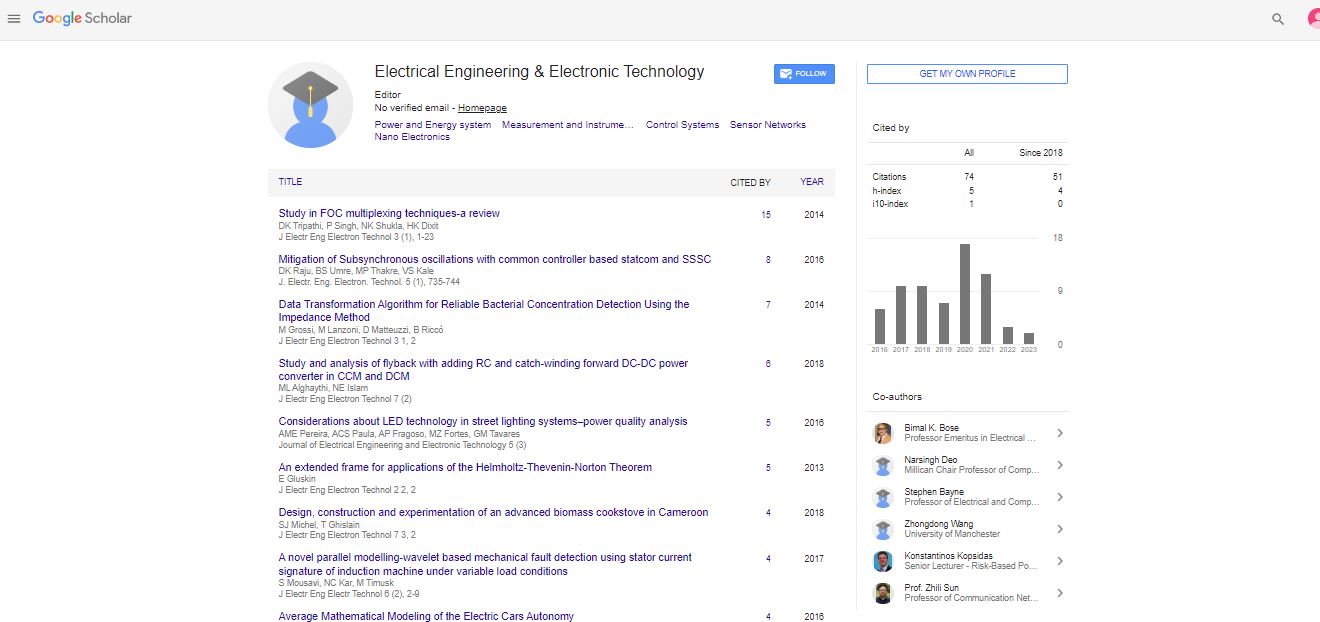Peculiarities of light-matter coupling in disordered microcavity lattice
Vladimir V Rumyantsev
ÃÂ ÃÂ Galkin Donetsk Institute for Physics and Engineering, Ukraine
: J Electr Eng Electron Technol
Abstract
The design of sources of coherent radiation based on new structures and materials is an extensive interdisciplinary research area that combines the laser physics, condensed matter physics, nanotechnology, chemistry, and information science. In this connection, some promising vistas can be opened by the so-called polaritonic crystals, which represent a particular type of photonic crystals featured by a strong coupling between quantum excitations (excitons) and electromagnetic waves. An example of polaritonic structure is provided by an array of coupled microcavities. Optical modes in microcavity systems have been attracting a considerable attention due to the progress in fabrication of novel optoelectronic devices. Worthy of noting are the defect-based microresonators in photonic crystals, which were shown to strongly interact with quantum dots. Another related and actively developing area is the photonics of imperfect structures. Some of our recent works are devoted to the optical properties of imperfect photonic crystals as well as to dispersion of exciton-like electromagnetic excitations in non-ideal crystals composed of coupled micro cavities. Defects in photonic crystals provide an additional tool for controlling and modelling the propagation of electromagnetic excitations. In the present paper, we use the previously developed concepts of photonic structures to treat a nonideal polaritonic crystal formed by a topologically ordered array of coupled microcavities (resonators) containing a system of atomic clusters (quantum dots). Particular attention is paid to the sensitivity of the polaritonic spectrum on the geometry and key parameters of interacting photonic and electronic subsystems.
Biography
E-mail: vladimir.rumyantsev2011@yandex.ru
 Spanish
Spanish  Chinese
Chinese  Russian
Russian  German
German  French
French  Japanese
Japanese  Portuguese
Portuguese  Hindi
Hindi 
